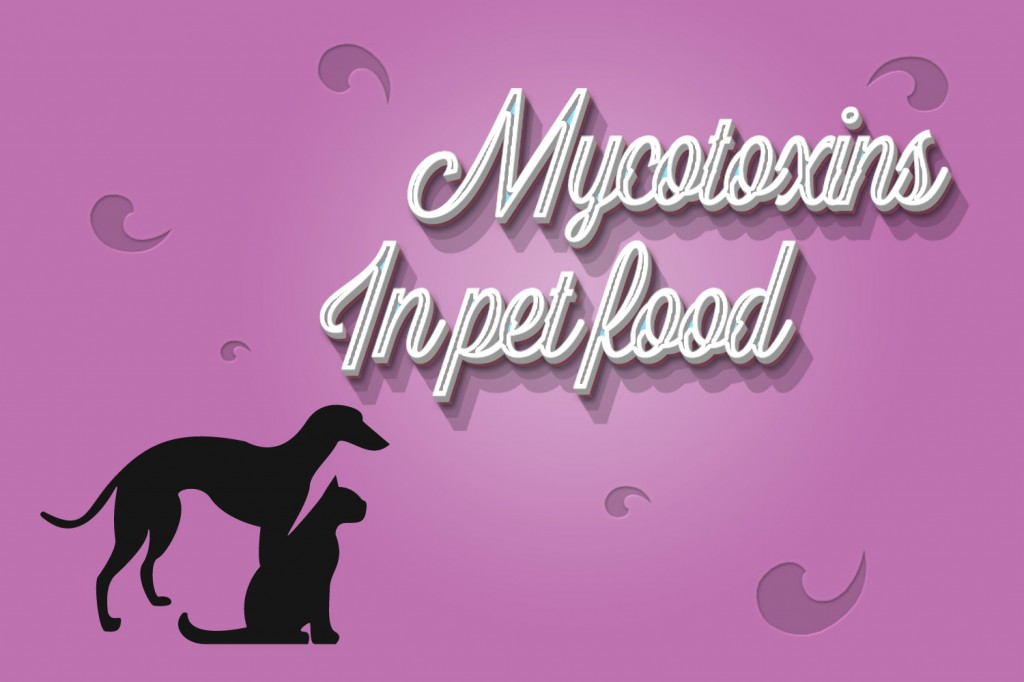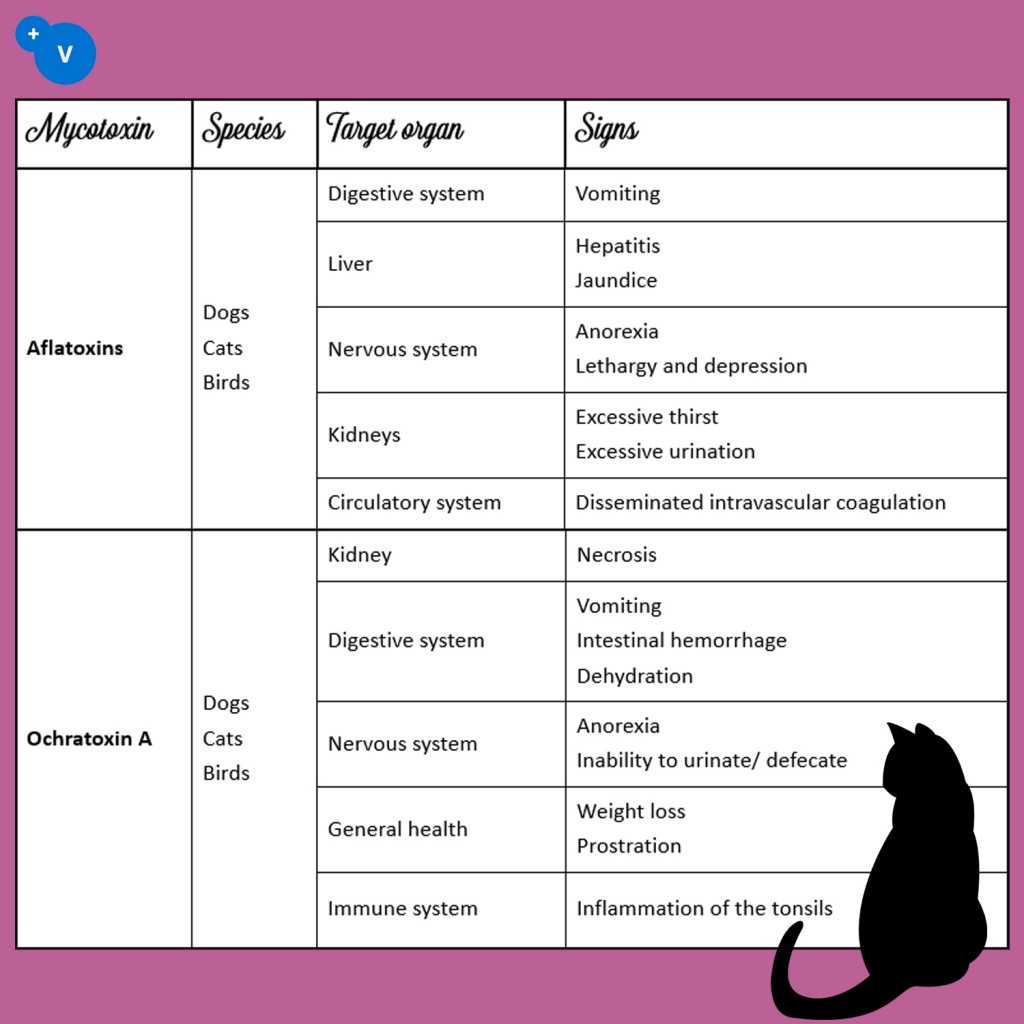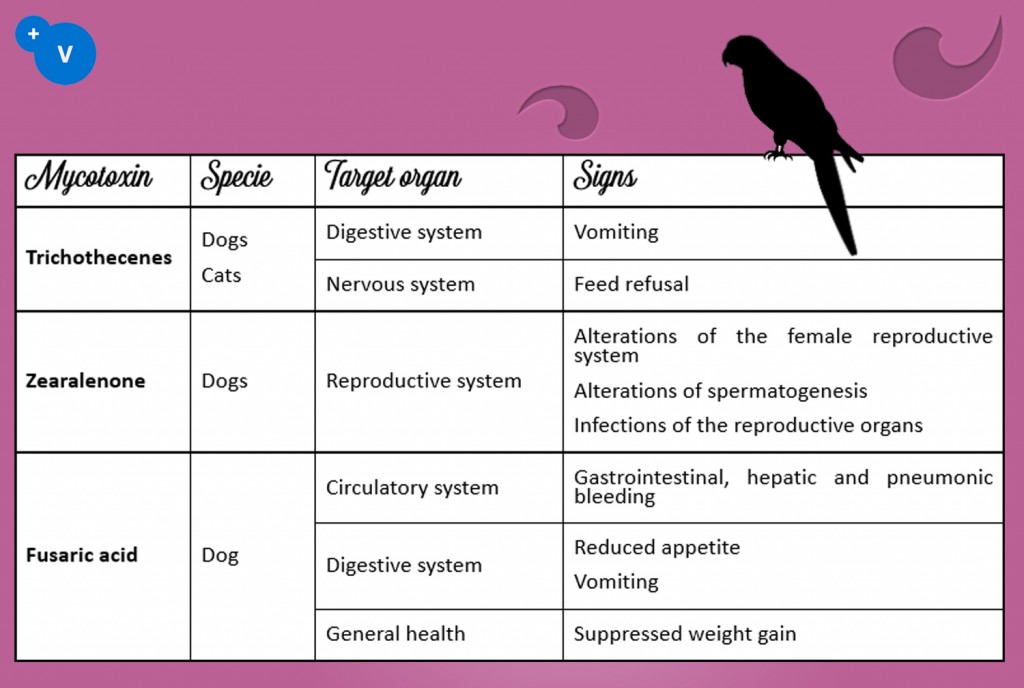01 Jun Mycotoxins in pet foods

The repercussion of mycotoxin contamination in pet food is less studied than their toxicity on farm animals, but several fatal outbreaks that happened in recent years raised awareness on the seriousness of the problem.
Raw materials that are potentially contaminated with mycotoxins, such as grains and nuts, are usually used as ingredients in commercial pet food for companion animals. Aflatoxins, ochratoxin A, trichothecenes, zearalenone, fusaric acid and penitrem A have been found in ingredients and finished products, resulting in both acute toxicity and chronic diseases in pets.
What are the possible mycotoxin effects in pets?
The sensitivity to mycotoxins differs not only among species but also depends on other factors:
- Toxin-related factors (type of mycotoxins consumed, level and duration of intake),
- Animal-related factors (specie, breed, sex, age, reproductive stage, general health status, immune status).
- Environment-related factors (hygiene, temperature).
Due to this complexity, it is not easy to diagnose problems related to mycotoxins in companion animals.
Most common effects of individual mycotoxins and typical signs are shown in the following tables.


Occurrence of mycotoxins in pet food
Research about the occurrence of mycotoxicosis in food for companion animals has increased in recent years. Most outbreaks of pet mycotoxicosis, however, go unoticed and may involve hundreds of animals.
Dry pet food is of particular concern because of its high cereal content. Böhm et al. (2008) investigated 76 dry dog food samples from Austria for their mycotoxin contamination. The results of this survey showed that 97% of tested samples were contaminated with deoxynivalenol with very high concentrations (up to 1386 ppb). Zearalenone was found in 47% (concentrations up to 664 ppb) and fumonisins in 42% (concentrations up to 568 ppb) of the food samples.
Previous research from the University of Guelph in Canada found that pet foods containing high percentages of plant-derived ingredients (cheap raw materials) are more likely to contain mycotoxins than foods that rely mostly on animal-derived ingredients like fish or meat (more expensive ingredients). Corn in particular is at high risk of contamination by multiple types of mycotoxins. The researcher who led the study suggested that pet owners should avoid cheap pet foods that are more likely to contain high percentages of cereals and corn or wheat fillers, as well as those with large amounts of rice bran.
Importance of an effective management of mycotoxin contamination
Pre and post harvest controls like those advised in FAO’s “Good Agricultural Practices” or proper storage of raw materials can reduce but not completely eliminate the risk of mycotoxin contamination. It is necessary to set up a complete plan to minimize the risk of mycotoxicosis.
In the first place, it is key that pet food manufacturers are aware of the implications of mycotoxin contamination. Secondly, it extremely important that manufacturers establish a system of analysis and selection of raw materials based on their mycotoxin contamination.
The third vital element in a system of prevention of pet mycotoxicosis is the use of anti-mycotoxin feed additives.
Anti-mycotoxin feed additives protect the animal by deactivation of mycotoxins. The mechanism of action is based either on adsorption of those mycotoxins with suitably located polar functional groups (mycotoxin binders) or biological degradation (bio-inactivating enzymes or microorganisms).
Products of choice
PlusBind© is a mixture of carefully selected silicates intended for the prevention of diseases and productivity losses related to the presence of all types of mycotoxins. It is indicated in poultry, pigs, aquaculture and ruminants.
The silicates present in PlusBind© have a highly expandable molecular structure. This characteristic gives the product a wide surface available for the adsorption of mycotoxins and therefore allows a high effectiveness at lower doses (0.5-1 kg per ton of feed).
PlusBind Bio© is a mixture of carefully selected silicates intended for the prevention of diseases and productivity losses related to the presence of all types of mycotoxins. It also contains plant extracts with prebiotic effect.
It is indicated in poultry, pigs and aquaculture.
The silicates present in PlusBind Bio© have a highly expandable molecular structure. This characteristic gives the product a wide surface available for the adsorption of mycotoxins and therefore allows a high effectiveness at lower doses (0.5-1 kg per ton of feed).

Certain health statements may not be applicable in your region.

